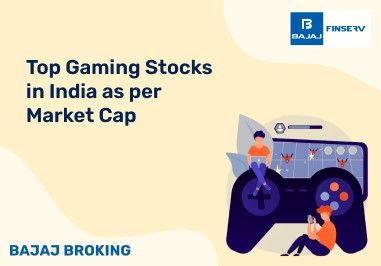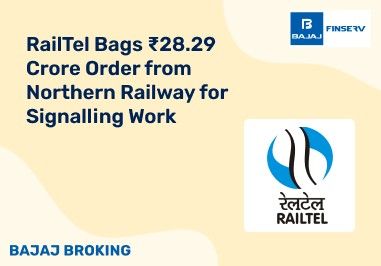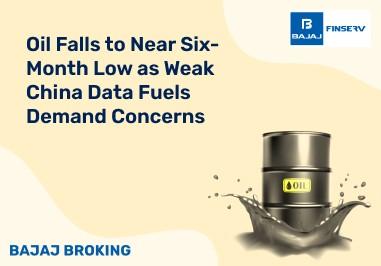BAJAJ BROKING
PDP Shipping & Projects IPO is Open!
Open a Free Demat Account
Trade Now, Pay Later with up to 4x
Track Market Movers Instantly
What is Future Pricing Formula?
Explaining Future Pricing
Futures pricing is linked to the value of the underlying assets it represents, and its price can either mirror or deviate from the current price of the asset. When the asset’s price rises, futures prices tend to increase as well, and the opposite is true when the asset’s price falls. However, disparities between futures and asset prices arise due to factors like spot-future parity. Moreover, variations in future and spot prices can occur due to factors such as dividends, interest rates, and expiration dates.
Pricing Of Futures Contract
The pricing of a futures contract is a critical aspect of financial markets. It involves determining the cost at which a standardised quantity of an underlying asset can be bought or sold at a specified date in the future. Futures prices are influenced by various factors, including the current spot price of the underlying asset, interest rates, dividends, carrying costs, and market expectations. These prices are not only essential for hedgers and speculators but also play a fundamental role in maintaining market stability. A deep understanding of futures contract pricing is crucial for investors and market participants, as it can impact trading strategies, risk management, and decision-making in a wide range of industries, from agriculture and energy to finance and beyond.
How Is the Futures Contract Price Calculated?
The determination of a futures contract’s price relies on a straightforward mathematical equation that equates the underlying asset’s price to the futures price. This formula for futures pricing is as follows:
Futures Price = Spot Price * (1 + rf) – d
In this equation, rf represents the risk-free rate, and d stands for the dividend. The rf value corresponds to the interest rate that one can typically earn over the course of a year in standard conditions. Nevertheless, traders can proportionally adjust it for contracts with different expirations, such as one, two, or three months. The adjusted formula takes the following form:
Future Price = Spot Price * [1 + rf * (X/365) – d]
Here, X represents the number of days until the contract’s expiration.
Also Read: Swaps in Derivatives
Key Factors in Futures Pricing
Futures prices are determined by several variables, and understanding these factors is essential for successful trading. Here are the main components that influence futures prices:
- Spot Price of the Underlying Asset
The current market price of the underlying asset (e.g., a stock, commodity, or currency) significantly impacts futures prices. If the spot price changes, it directly affects the corresponding futures price.
- Risk-Free Interest Rate (rf)
The risk-free rate represents the interest rate that can be earned throughout the year under normal circumstances. It accounts for the time value of money and reflects market expectations. The futures pricing formula includes this interest rate.
- Dividends (d)
Dividends paid by the underlying asset also play a role in futures pricing. If an asset pays dividends during the contract period, it affects the futures price.
- Storage Costs
For commodities like oil or grains, storage costs impact futures prices. These costs include expenses related to storing and maintaining physical inventory.
- Convenience Yield
This concept applies mainly to commodities. Convenience yield represents the benefits or advantages gained from holding the physical commodity rather than a futures contract. It affects futures pricing.
The futures pricing formula is given by:
Futures Price = Spot Price * e^(rT)
Where:
- Futures Price is the price of the futures contract.
- Spot Price is the current price of the underlying asset.
- r is the risk-free interest rate.
- T is the time to maturity or expiration of the futures contract in years.
- e is the mathematical constant approximately equal to 2.71828.
Read Also: Difference Between Forward and Futures Contract
Essentials of Futures Pricing
Understanding futures pricing involves several key elements:
1. Buying and Selling Futures Contracts
Futures contracts represent legal agreements between a buyer and a seller. Buyers typically take long positions, while sellers assume short positions, reflecting their expectations for the underlying asset’s future price movement.
2. Margin Requirements
Margin is the initial deposit made by both parties with their respective stockbrokers at the outset of a trade. It serves as collateral to ensure that both parties fulfil their contractual obligations upon contract expiration. If the initial margin falls below a specified maintenance level, parties may receive a margin call, requiring additional funds to meet the margin requirement.
3. Mark-to-Market
Mark-to-market is a daily process to determine the current value of futures contracts. These contracts can experience price fluctuations throughout the trading day. Mark-to-market calculations are conducted at the close of each trading day. Clearinghouses facilitate these calculations and adjust the margin accounts to account for price differences.
4. Profit and Loss (P&L) Accounting
Daily price differentials from the mark-to-market process are credited or debited to the P&L accounts of the involved parties. These adjustments reflect gains or losses based on the fluctuating values of their futures contracts and are settled daily using the margin funds deposited with clearinghouses.
Also Read: OTM Call Options
Various Future Pricing Models
There are two distinct future pricing models to consider:
1. Cost-Carry Model
The cost-carry model operates under the assumption of perfect market efficiency, where no disparity exists between spot and futures prices, eliminating any arbitrage opportunities. Arbitrage involves capitalising on price differences in two markets.
In this model, traders remain indifferent to both markets since their returns are equivalent in either. The futures price equates to the spot price plus the net cost of holding the assets until expiration.
Therefore, Futures Pricing = Spot Pricing + (Carrying Costs – Carrying Returns)
Carrying costs encompass expenses such as storage fees, interest incurred in asset acquisition, or financing costs. Carrying returns account for any income generated from these assets, like divid
ends and bonuses. The difference between these constitutes the net carrying cost.
Read Also: What are the Different Types of Futures?
2. Expectancy Model
The expectancy model relies on anticipated pricing trends. It establishes futures pricing for an asset based on the expected future spot price. In this model, futures prices are positive in bullish markets and negative in bearish markets, with consideration given solely to the anticipated future spot price.
In summary
Futures contracts are integral to the efficient functioning of the commodities market. These contracts enable buyers and sellers to secure prices ahead of time, providing stability for farmers, miners, manufacturers, and various market participants who can then focus on their operations without being constantly affected by daily market fluctuations.
Share this article:
Read More Blogs
Our Secure Trading Platforms
Level up your stock market experience: Download the Bajaj Broking App for effortless investing and trading













